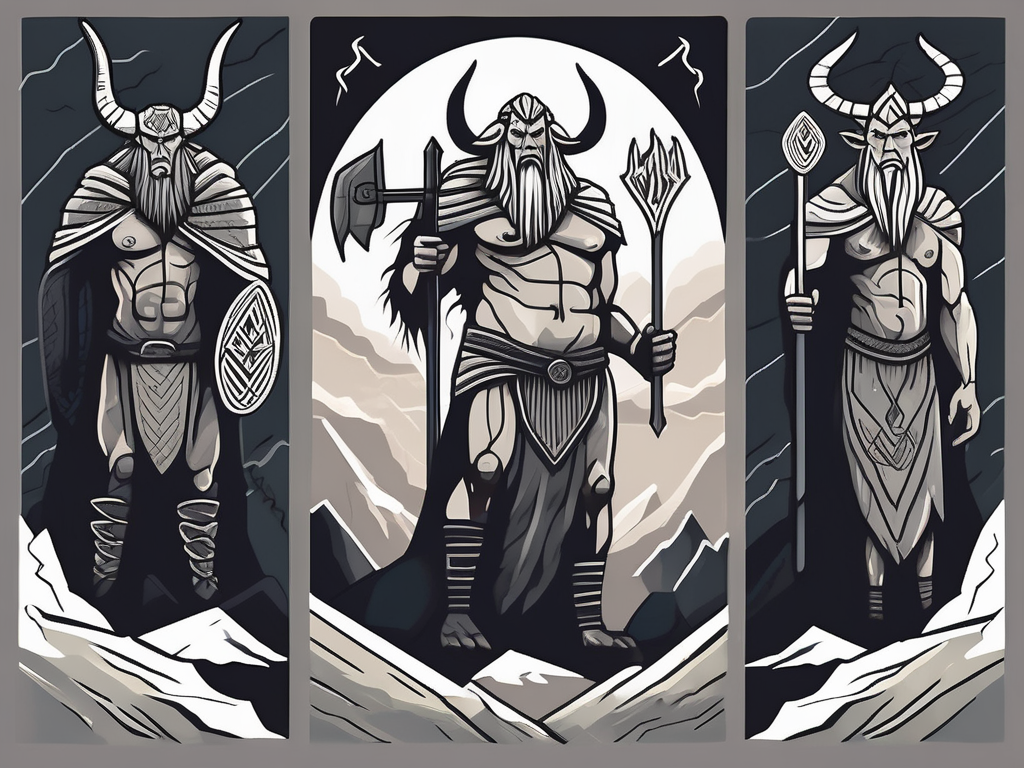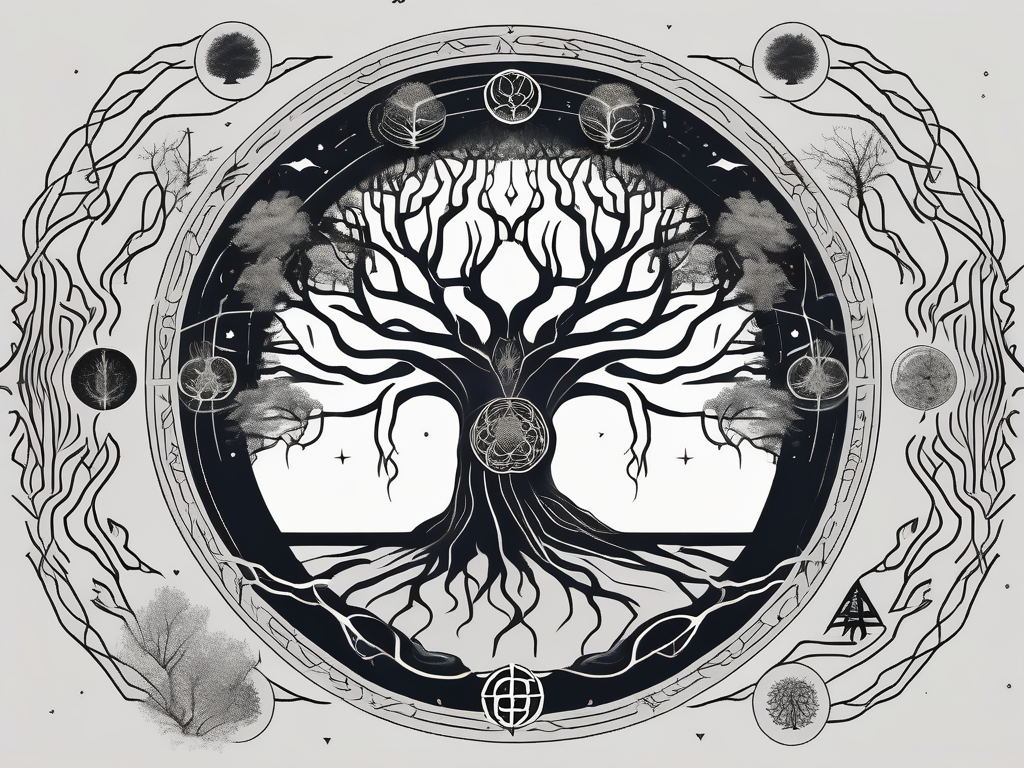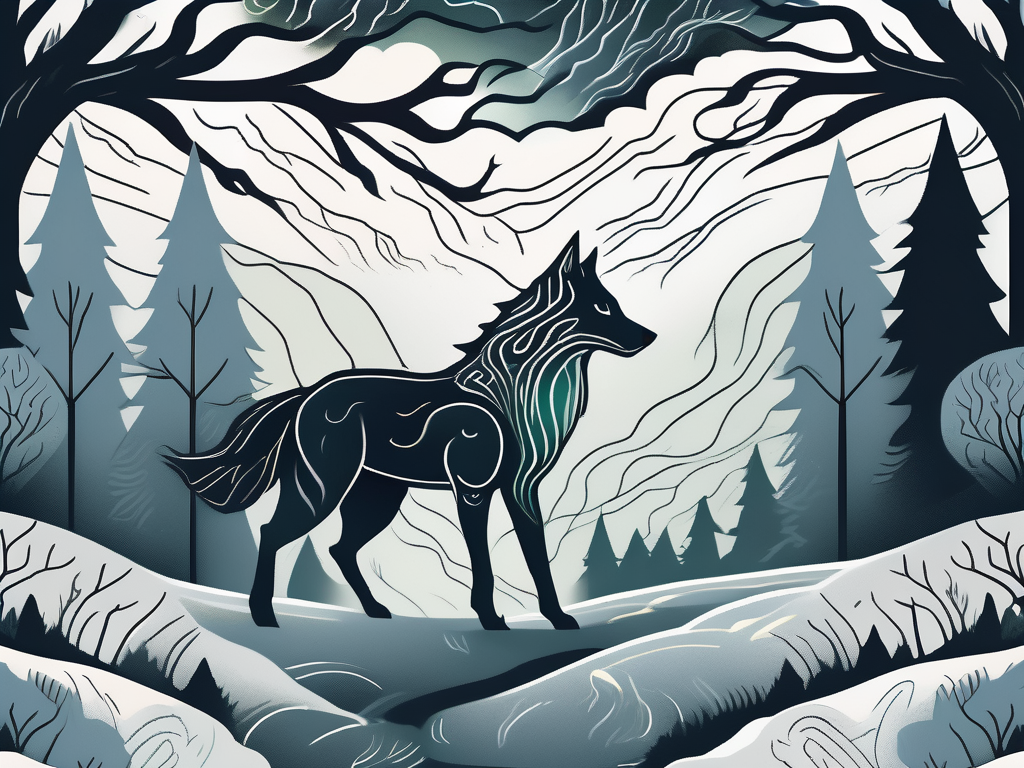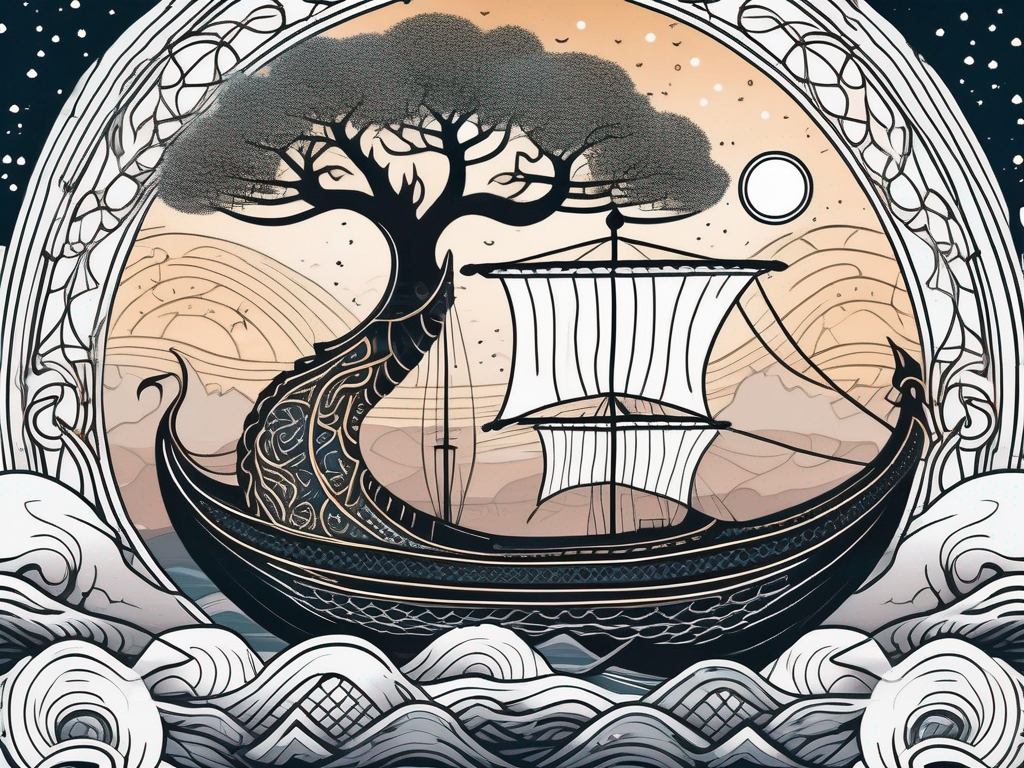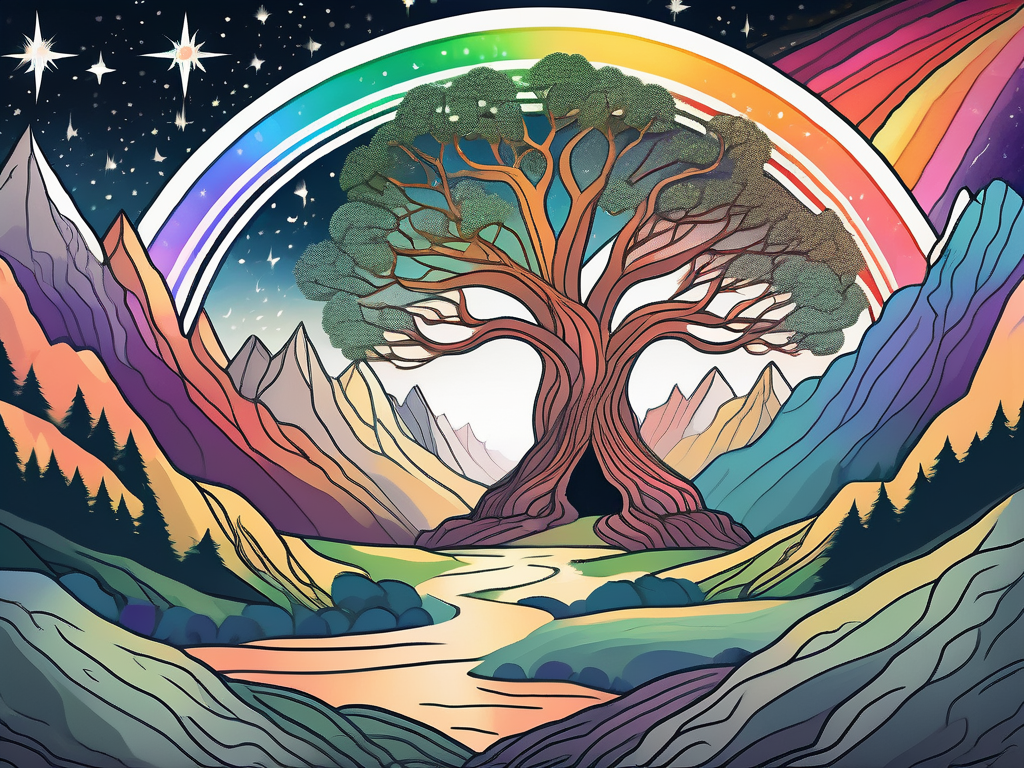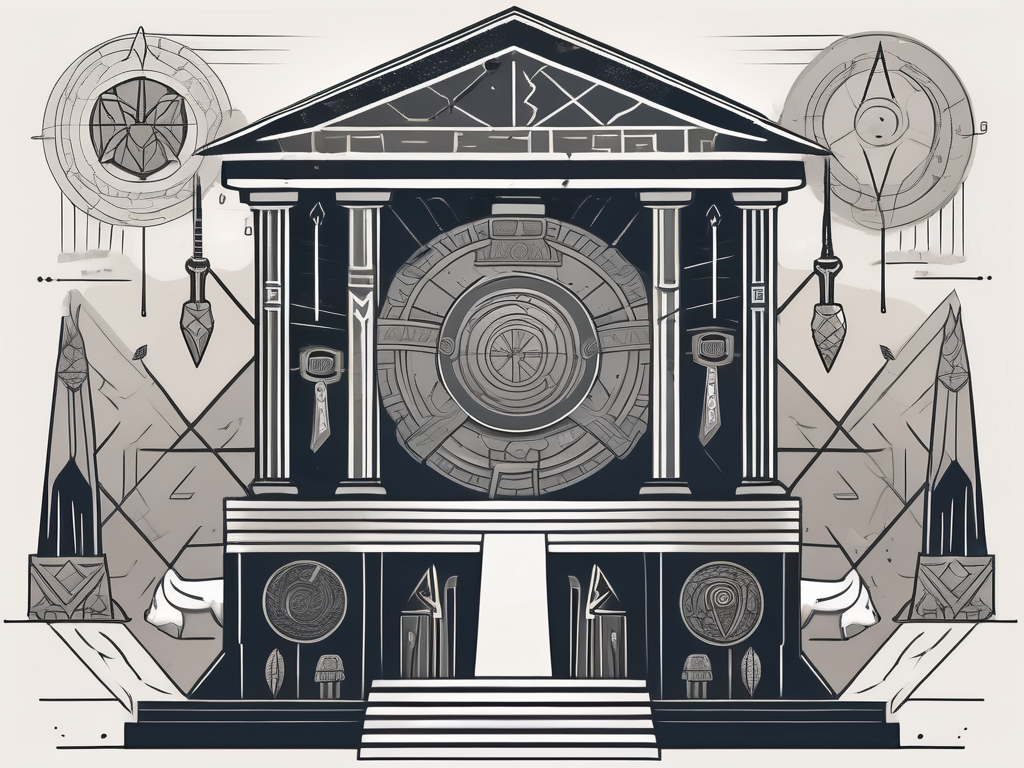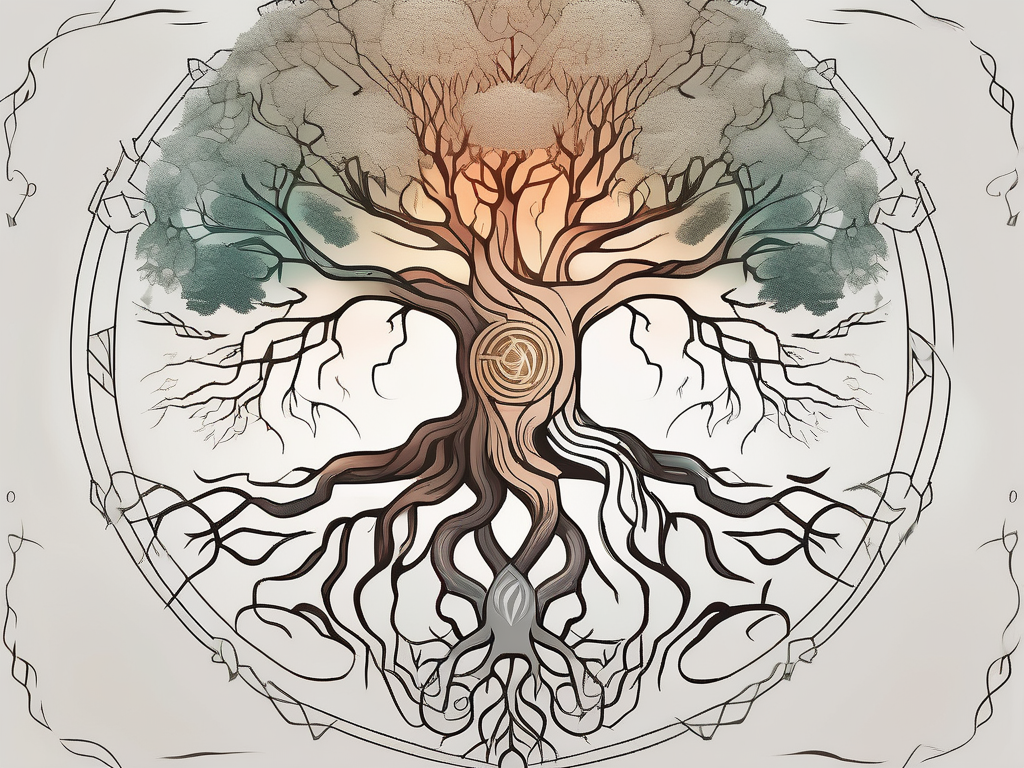Norse mythology is a rich and captivating tapestry of tales, woven together with gods, heroes, and creatures of all kinds. Among these mythical beings, demons hold a special place, known for their malevolent and mischievous nature. In this article, we will delve into the depths of Norse mythology to uncover the secrets and symbolism behind these fascinating demons.
Understanding Norse Mythology
Before we delve into the world of Norse demons, it’s important to understand the origins and key beliefs of Norse mythology. The Norse pantheon is a collection of gods and goddesses who ruled over the realms of Asgard, Midgard, and the nine realms.
Norse mythology is rooted in the ancient Norse culture and was passed down through oral tradition for centuries. This rich mythology was their way of explaining the mysteries of the world and the forces that governed it.
The Norse people had a deep connection with nature, and their mythology reflected this. They believed that the world was inhabited by various beings, both divine and monstrous. These beings played important roles in shaping the world and the lives of humans.
The Origins of Norse Mythology
The roots of Norse mythology can be traced back to the pre-Christian era of Northern Europe. The Vikings, known for their seafaring prowess and warrior culture, embraced these myths as a way to make sense of their surroundings.
The Norse gods and goddesses were seen as powerful beings who controlled different aspects of the natural world. For example, Thor, the god of thunder, was responsible for storms and lightning, while Freya, the goddess of love and fertility, governed matters of the heart.
These myths were passed down through generations, with each retelling adding its own unique flavor. They eventually found their way into written works, such as the Poetic Edda and the Prose Edda, which served as important sources for our understanding of Norse mythology today.
One of the most well-known Norse myths is the story of Ragnarok, the end of the world. According to this myth, a great battle will take place between the gods and their enemies, resulting in the destruction of the world. However, from the ashes, a new world will be born, and the cycle will begin again.
Key Concepts and Beliefs in Norse Mythology
Norse mythology revolves around a few key concepts, which are crucial to understanding the role of demons within this framework. One such concept is the idea of fate, or “Wyrd.” According to Norse belief, fate was predetermined and unchangeable, even for the gods themselves.
This belief in fate had a profound impact on the Norse people’s worldview. It meant that they had to accept whatever came their way, whether it be good or bad, as a result of their predetermined destiny. This belief also extended to the gods, who were bound by their own fates.
Another key belief in Norse mythology is the existence of a cosmic tree called Yggdrasil, which connects the nine realms. This mystical tree is said to be the source of life and sustains all living beings. It is believed that the gods themselves reside within the branches of Yggdrasil, overseeing the affairs of the world.
Within Norse mythology, the gods and goddesses were not immortal in the traditional sense. They were subject to the cycle of life and death, just like humans. However, they possessed great powers and were able to shape the world in ways that humans could only dream of.
The Norse people believed in the existence of various realms, each with its own unique characteristics and inhabitants. Asgard, the realm of the gods, was a place of great beauty and power. Midgard, also known as Earth, was the realm of humans, while the other realms were inhabited by beings such as giants, dwarves, and elves.
Overall, Norse mythology is a complex and fascinating belief system that offers insights into the ancient Norse culture and their understanding of the world. By exploring the origins and key beliefs of Norse mythology, we can gain a deeper appreciation for the role of demons within this intricate framework.
The Role of Demons in Norse Mythology
Now, let’s dive into the intriguing role that demons play within Norse mythology. Unlike traditional depictions of demons in other cultures, Norse demons are not inherently evil. Instead, they embody chaos and mischief, disrupting the order of the world.
Within the rich tapestry of Norse mythology, demons hold a significant place. They are not mere antagonists or malevolent beings, but rather complex characters that serve as catalysts for change and growth. Through their actions, they test the courage and wisdom of the gods, providing opportunities for transformation and self-discovery.
Demons in Norse mythology are portrayed as cunning tricksters, capable of outwitting even the most powerful figures in the pantheon. One notable example is Loki, the infamous trickster demon who is both feared and revered. Loki’s mischievous nature and unpredictable behavior make him a fascinating character, adding depth and intrigue to the tales in which he appears.
The Significance of Demons in Norse Tales
Demons play a vital role in Norse tales, serving as foils and opponents to the gods and heroes. Their disruptive presence challenges the established order and forces the divine beings to confront their own limitations and flaws. Through these encounters, the gods are pushed to evolve and adapt, ultimately becoming stronger and wiser.
One such tale is the story of Thor’s encounter with the demon Jormungandr, the giant serpent that encircles the world. In this epic battle, Thor tests his strength and courage against the formidable creature, ultimately gaining a deeper understanding of his own power and purpose.
Another significant demon in Norse mythology is Fenrir, the monstrous wolf destined to bring about the end of the world, known as Ragnarok. Fenrir’s presence in the tales serves as a reminder of the inevitable cycles of destruction and rebirth, highlighting the transient nature of existence.
The Influence of Demons on Norse Culture
The presence of demons in Norse mythology extended beyond the realm of storytelling. Their tales formed an integral part of Norse culture, shaping their values and influencing their daily lives.
For example, demons were often invoked as a source of inspiration and creativity. Bards and storytellers would draw upon the tales of demons to captivate their audiences, infusing their performances with a sense of mystery and intrigue. These stories served as a means of connecting with the supernatural forces that governed the world, fostering a deeper understanding of the human condition.
Furthermore, the portrayal of demons as agents of chaos and change in Norse mythology reflected the Norse worldview. The Norse people recognized the inherent unpredictability of life and the importance of adapting to ever-changing circumstances. The tales of demons served as cautionary tales, reminding individuals to embrace the unknown and find strength in the face of adversity.
In conclusion, demons in Norse mythology play a multifaceted role, challenging the gods, shaping the culture, and inspiring creativity. Their presence adds depth and complexity to the Norse pantheon, reflecting the intricate nature of the human experience.
Notable Demons of Norse Mythology
Within Norse mythology, several demons stand out for their captivating stories and unique symbolism. Let’s explore some of these notable demons:
Loki: The Trickster Demon
Loki, the sly and cunning Norse demon, is often at the center of mischief and chaos. Despite his misdeeds, Loki is widely regarded as a complex character, embodying both the light and dark aspects of human nature.
His tales often revolve around his cunning escapades and his ability to transform into various creatures, including animals and even inanimate objects. Loki’s unpredictable nature poses a constant challenge for the gods, making him a central figure in many Norse myths.
Fenrir: The Monstrous Wolf
Fenrir, the monstrous wolf, is another demon of great significance in Norse mythology. Born to Loki and the giantess Angrboda, Fenrir was feared for his immense strength and the threat he posed to the gods.
As the prophecies foretold, Fenrir eventually became a danger that couldn’t be ignored. Despite the gods’ attempts to bind him, Fenrir’s ferocity could not be restrained, and he played a crucial role in the events leading to Ragnarok, the apocalyptic battle of the gods.
Jörmungandr: The World Serpent
Jörmungandr, also known as the World Serpent, is a massive sea serpent believed to encircle the world. Born of Loki and the giantess Angrboda, Jörmungandr grew so large that he eventually became a threat to all of Midgard.
According to Norse mythology, Jörmungandr’s rivalry with Thor, the god of thunder, will culminate in a climactic battle during Ragnarok. This epic clash represents the eternal struggle between chaos and order in Norse mythology.
The Symbolism of Demons in Norse Mythology
Beyond their roles in storytelling, demons in Norse mythology are laden with symbolism, providing insights into the deeper meanings behind their tales.
The Demon as a Symbol of Chaos
Demons within Norse mythology represent chaos and unpredictability. Their presence serves as a reminder that even the most orderly and powerful beings must grapple with the forces of chaos and uncertainty in their lives.
The Demon as a Symbol of Destruction
Demons also embody the destructive aspects of existence. Their actions often lead to upheaval and destruction, offering a cautionary tale about the consequences of unchecked malevolence.
The Impact of Norse Demons on Modern Media
The influence of Norse demons can be felt in various forms of modern media, from literature to film and television. Their captivating stories continue to inspire and captivate audiences worldwide.
Norse Demons in Literature
Authors such as J.R.R. Tolkien drew heavily from Norse mythology in their works, infusing their stories with the depth and complexity of Norse demons. The presence of these demons adds an element of intrigue and danger to the narrative, engaging readers on a profound level.
Norse Demons in Film and Television
The allure of Norse demons has also found its way onto the silver screen. From epic battles in movies like “Thor” to complex character portrayals in series like “Vikings,” Norse demons continue to captivate viewers, bringing these ancient tales to life in exciting and visually stunning ways.
Unveiling the Mysteries of Norse Demons
As we peel back the layers of Norse mythology, the demons within it offer us a unique perspective on the nature of chaos and destruction. Their stories not only entertain but also challenge us to confront our own fears and embrace the unpredictability that exists in our lives. Norse demons will continue to intrigue and inspire for generations to come, leaving an indelible mark on the tapestry of mythology.
